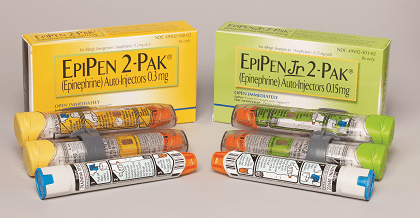
Shellfish allergy is an immune system response to the proteins found in certain types of seafood. It’s the most common allergy in North American adults, often developing in adulthood.
What Are Shellfish?
There are two types of shellfish: crustaceans and mollusks. Crustaceans have jointed legs, a hard shell and no backbone. They include sea creatures such as crab, shrimp, lobster, prawns and crayfish (also called crawfish).
Most mollusks have hinged shells – among them clams, mussels, oysters and scallops. But mollusks also include aquatic creatures such as octopus, squid (or calamari), cuttlefish and conch, as well as snails (escargot).
Some people with allergies to crustaceans can tolerate mollusks, while others can eat mollusks but not crustaceans. Some are allergic to both, but crustaceans are the more common culprit. Others can be allergic to a single type of shellfish – so they can tolerate shrimp but not lobster, for example, or crab but not prawns.
People who are allergic to shellfish can also be allergic to finned fish such as salmon and tuna. Yet, from an allergy perspective, the two types of foods have no relationship to each other.
“They have nothing in common other than liking water,” says Dr. Scott Sicherer, director of the Jaffe Food Allergy Institute at Mount Sinai’s Icahn School of Medicine in New York, and a professor of pediatric allergy and immunology.
He notes that by most measures, shellfish allergy is the most common allergy affecting adults, with some estimates as high as 3 percent of the adult population.
Symptoms and When to Use Epinephrine
Shellfish allergy is IgE-mediated, which means the symptoms are caused by interaction between shellfish proteins and an antibody called IgE. The symptoms of a shellfish allergy can vary widely, from mild to life-threatening. They can include:
- Tingling in the mouth
- Nasal congestion/stuffiness
- Skin hives or redness and itchiness
- Swelling of the tongue, lips, throat, eyes
- Coughing, shortness of breath, difficulty breathing or wheezing
- Abdominal pain, nausea, vomiting or diarrhea
- Dizziness or faintness due to drop in blood pressure
Anaphylaxis: Shellfish allergy can cause anaphylaxis, the severe form of allergic reaction. These reactions can even be life-threatening. If you have a shellfish allergy, speak to your doctor about getting a prescription for an epinephrine auto-injector, the essential treatment tool. You will want your doctor’s advice on when and how to use it in a reaction. Also, ask your doctor to create an anaphylaxis emergency care plan, which reminds you of symptoms and how to treat them.
Typically, symptoms appear either immediately after eating shellfish or within two hours of ingestion. While less common, late-phase reactions have been reported up to eight hours later.
Shellfish Allergy Causes: A Role for Dust Mites?
The main allergen in shellfish is a protein called tropomyosin. In addition to being found in shellfish, it’s also in crickets, cockroaches and dust mites.
Sicherer says it’s unclear why so many adults develop shellfish allergy, but one theory is that our constant exposure to dust mites in our mattresses, furnishings, carpets and other areas could be playing a role.
He compares it to the same way bakers become allergic to flour and nurses used to become allergic to latex through repeated exposure. Similarly, those who are regularly exposed to dust mites could be at greater risk, though studies have yet to prove this definitively. In some regions, the ubiquity of cockroaches could also be playing a part.
How is Shellfish Allergy Diagnosed?
Shellfish allergy is typically diagnosed through skin testing at an allergist’s office, or through a blood test, or both. The physician may also ask the patient to keep a food diary, or eliminate certain foods from their diet. This is to help determine which shellfish types are responsible for the reactions.
Unlike other food allergies, which can change over time, shellfish allergy tends to persist for life. One study showed this was the case in up to 90 percent of patients.
Managing Allergies to Shrimp, Mussels and More
Allergies are very individualized, so it’s important to work with your allergist and create a plan that’s specific to you and your allergy history.
The primary strategy for managing a shellfish allergy is to avoid consuming the types of shellfish that trigger reactions. People with allergies to crustaceans may also react if they eat edible insects such as crickets and mealworms, as they contain the same primary allergen, tropomyosin.
Those with shellfish allergies should carefully read ingredient labels. The allergen can be found in certain types of sauces – especially fish sauces – as well beverages like Clamato. Watch out for shellfish in dishes such as jambalaya, paella, gumbo, scampi, calamari, ceviche and more. Shellfish can also be found in some fish foods, pet foods, fertilizers and supplements like glucosamine.
Because a very small quantity of allergen can trigger a reaction, people with shellfish allergies may want to avoid eating in restaurants that serve a lot of seafood, as the cross-contact risk is high. If the allergy is especially serious, they may also need to avoid environments where shellfish is being cooked, as breathing the aerosols can trigger a reaction.
“With a serious shellfish allergy, going to a shellfish restaurant doesn’t sound like a great idea,” says Sicherer. “If you’re going to a restaurant that serves some seafood, you could order something else, and probably not have to worry too much. But if it’s really a seafood-centric place, and there’s steaming food all around you, that’s a different story.”
People with shellfish allergy should also ask about the potential for cross-contamination before buying fish from seafood markets or other grocery counters where fish and shellfish are sold side-by-side. They need to do the same before ordering deep-fried foods from a restaurant or food stand that sells items like fried shrimp.
Shellfish and Co-factor Reactions
According to Sicherer, shellfish allergy is especially sensitive to what are called co-factors, which make allergic reactions more likely. For instance, sometimes a person may tolerate shellfish, but if they eat a large quantity of it or consume it with alcohol, it can tip them into a reaction. Or, a co-factor might be taking aspirin with the food, or exercising shortly before or after eating it, or consuming it when sick with a cold or flu.
“Sometimes you hear a story like, ‘I have eaten shrimp all my life, but at this wedding, I had a reaction to it,’” says Sicherer. He then asks the person what they had been doing. “And they say, ‘Well, I had a lot of shrimp, and then I was dancing, and I was drinking wine.’ So there’s exercise and alcohol. Those are some of the additional nuances that come up.”
Unfortunately, there is currently no treatment for shellfish allergy, and it is rarely used in oral immunotherapy studies.
Other Shellfish Allergy Fast Facts
Sicherer raises other interesting findings about shellfish allergy:
- Studies have shown that shellfish allergy is more prevalent among the Black population, but it is unclear why.
- The fish food that people use to feed aquarium fish is often made from squid or shrimp. So people with shellfish allergies should ask their doctor if it is safe for them to handle.
- Swimming in the ocean will not typically cause a reaction because the dilution factor is so significant. Walking on the beach presents little risk, and people should simply wash their hands before eating if they come in contact with shellfish at the seashore.
- There’s a persistent myth that people with shellfish allergy are more likely to react to the contrast dyes used in CT scans and other diagnostics, but Sicherer says it isn’t rooted in any science. “There’s no connection there. It’s a weird myth,” he says, adding the misbelief likely stems from the fact that contrast media and shellfish both contain iodine. “People who have allergies might be more likely to be allergic to IV contrast, but it’s not based in an allergy to iodine.”
Related Reading:
Do Antacids or Alcohol Trigger Shellfish Allergy in Adults?
Is It Safe to Eat Calamari with a Shellfish Allergy?
When Is There Risk for an Airborne Shellfish Reaction?
Dust Mite Allergy: Get the Upper Hand
Peanut Oil and Allergy: When Is It Safe to Eat?





